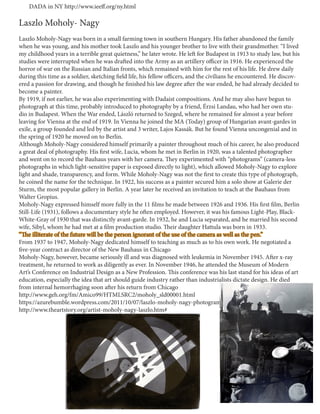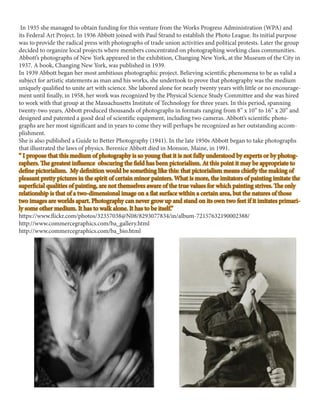Laszlo Moholy-Nagy was born in Hungary and grew up in poverty after his father abandoned the family. He studied law but his studies were interrupted when he was drafted to serve in World War I, where he began drawing. After the war, he decided to become a painter and experimented with Dadaist compositions. In 1920, he moved to Berlin where he met his first wife Lucia, also a photographer, and began experimenting with photograms. In 1923, he was invited to teach at the Bauhaus and later made avant-garde films. From 1937-1947, he dedicated himself to teaching photography and film at the New Bauhaus in Chicago until his death from leukemia in 1946.










